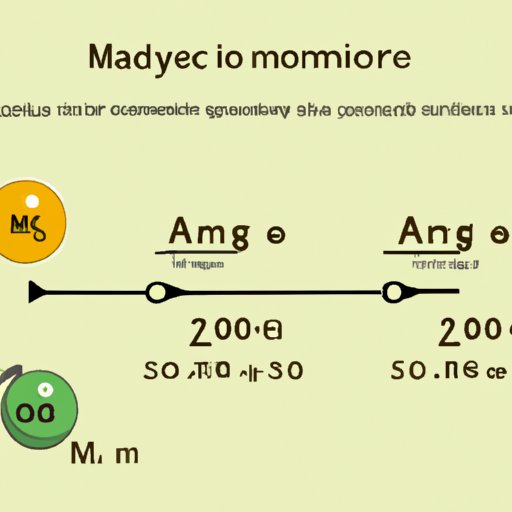
I. Introduction
Have you ever wondered how to convert moles to grams? This is a common problem faced by students, scientists, and professionals in fields such as chemistry and pharmacy. Accurate conversion of moles to grams is essential for obtaining correct measurements and achieving desired results. In this article, we will provide you with a step-by-step guide on how to find moles in grams and other useful information that will improve your understanding of the topic.
II. Step-by-Step Guide
Before we start with the step-by-step guide, let us first define the mole concept. A mole is a unit of measurement used to express the amount of a substance, similar to how dozen is used to express the number of items. Avogadro’s number, which is approximately 6.02 x 10^23, is used to determine the number of entities (atoms, molecules, or ions) in one mole of a substance.
Now, let us move on to the step-by-step guide on how to convert moles to grams. First, determine the molecular weight of the substance in question by adding the atomic weights of each atom in the formula. For example, the molecular weight of water (H2O) is:
Molecular weight = 2(1.008) + 1(15.999) = 18.015 g/mol
Next, determine the number of moles of the substance by dividing the given mass by the molecular weight. For example, if we have 36.03 grams of water:
Number of moles = 36.03 g / 18.015 g/mol = 2.00 mol
The formula used to convert moles to grams is:
Mass (g) = Number of moles x Molecular weight
Using the values from the previous example, we can calculate the mass of 2.00 moles of water:
Mass (g) = 2.00 mol x 18.015 g/mol = 36.03 g
III. Video Tutorial
Visual aids such as videos are useful in understanding complex topics such as mole to gram conversions. In this video tutorial, we will demonstrate the process of how to find moles in grams with practical experiments. The video will also explain the steps and calculations involved in the conversion.
IV. Infographic
Infographics are another useful tool in simplifying complex topics. In this section, we will provide an infographic explaining the process and formula for converting moles to grams with visual aids and simplified explanations. We will also explain key terms and concepts with examples.
V. Common Calculation Mistakes
Despite the simplicity of the conversion process, common mistakes can occur in mole to gram conversions. In this section, we will explain these common mistakes and provide tips on how to avoid them to improve your accuracy. We will also provide examples of problems and how to solve them correctly.
VI. Applications
The conversion of moles to grams is used in various fields and industries. In this section, we will explain the different applications of mole to gram conversion and the importance of knowing how to calculate it. We will also provide examples of industries and professions that use mole to gram conversions.
VII. Real-World Situations
Mole to gram conversion is not just used in laboratories and research facilities but is also used in everyday situations. In this section, we will provide examples of its use in fields such as manufacturing and pharmaceuticals. We will also explain how it affects certain processes.
VIII. Comparisons
In this section, we will compare mole to gram conversion with other common numerical conversions. We will explain the differences between mole to gram and other conversions such as kilograms to grams. We will also explain the benefits and limitations of each conversion method.
IX. Conclusion
Converting moles to grams is a simple yet essential process that is used in various fields and industries. In conclusion, we have provided you with a step-by-step guide on how to find moles in grams, a video tutorial, an infographic, and other useful information that will improve your understanding of the topic. We hope that this article has been helpful and encourages you to apply what you have learned.




